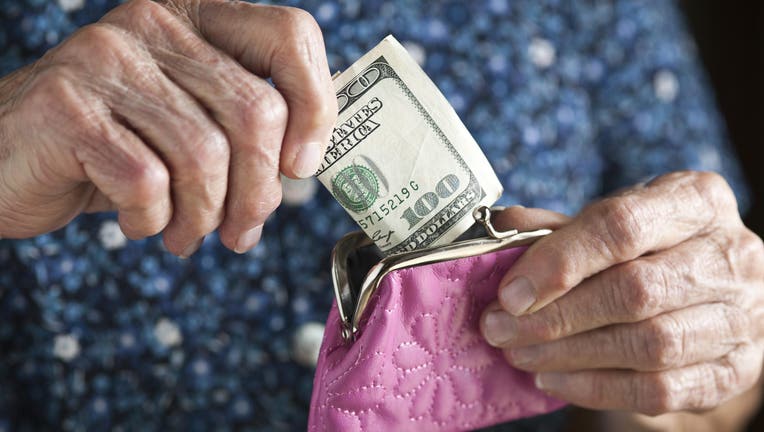More than half of adults over 65 are missing out on free money for food, health care

FILE - Senior adult holding a one hundred dollar bill and a pink change purse. Getty Images
Millions of older adults are not getting benefits they’re eligible for, according to a data analysis done by Urban Institute’s Analysis of Transfers, Taxes, and Income Security (ATTIS).
Nine million adults aged 65 and over with limited incomes are eligible for but not enrolled in programs that can help them afford food, Medicare, and other daily expenses.
The National Council on Aging (NCOA), a charitable organization that advocates for older Americans, shared the key national findings:
- SNAP: Almost 9 million older adults are eligible for but not enrolled; only 30% of eligible older adults are enrolled
- SSI: More than 2.3 million older adults are eligible for but not enrolled; 49% are enrolled
- MSP: Almost 5.8 million older adults are eligible for but not enrolled; 46% are enrolled
State participation rates were found to vary from 17% to 82%, and wide variation among counties was also found.
Massachusetts, New York, Alaska, Washington, and Florida have participation rates within the top quarter of all states for all programs.
North Dakota, Wyoming, and Montana have participation rates in the bottom quarter of states for all programs.
The NCOA partnered with the Urban Institute to transform their data and findings into a comprehensive map to help states and community-based organizations identify where to focus their enrollment efforts for the greatest impact.
RELATED: Inflation eases in July, but these cities are dealing with the worst of it: Study
Who is eligible for SNAP?
The Supplemental Nutrition Assistance Program, or SNAP, provides monthly support for food. It was formerly known as food stamps.
Information varies by state to determine who is eligible. Find information on your state on the USDA’s Food and Nutrition Service website here.
For SNAP, participation rates range from a low of 17% in California and Iowa to high of 51% in Rhode Island — the only state to break 50% for SNAP.
RELATED: Here’s what the typical grocery basket costs today – and it's higher than last year
Who is eligible for SSI?
Different from Social Security, Supplemental Security Income (SSI) provides a monthly cash aid.
Adults and children might be eligible for SSI if they have:
- Little or no income, and
- Little or no resources, and
- A disability, blindness, or are age 65 or older.
Get more information from the Social Security website here.
For SSI, participation rates range from a low of 21% in North Dakota and New Hampshire to 82% in Alaska.
Several states with large populations of eligible individuals who are not enrolled were among those with the highest participation rates. For example, while California has a 59% participation rate in SSI, there are still over 400,000 individuals who are not enrolled, and New York, which has a 65% participation rate, has 120,000 individuals who are not enrolled.
RELATED: 2025 Social Security COLA increase: What we know
Who is eligible for Medicare Savings Program?
The Medicare Savings Program (MSP) helps pay for Medicare premiums, deductibles and co-insurance.
There are four Medicare Savings Programs, each with different income and resource eligibility limits, according to the NCOA.
NCOA has more information and the programs and eligibility here.
For MSP, participation rates range from a low of 21% in North Dakota to 67% in Washington.

